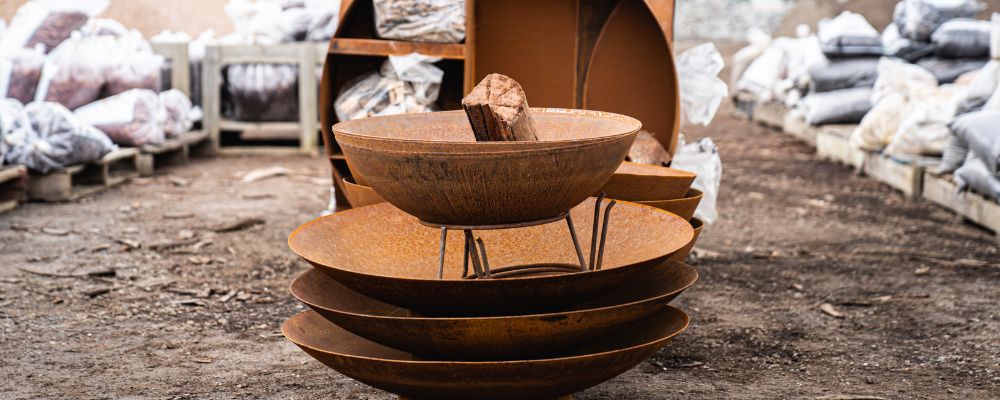In this blog, we will discuss how to build the perfect, long-lasting fire for both indoor and outdoor settings. We'll also take a look at the benefits of using Redgum Firewood and how it can enhance your fire-building experience.
1. Firewood Selection
The foundation of any great fire lies in the choice of firewood. Redgum Firewood is an excellent option for building a long-lasting fire. Here are the benefits of using it:
- High heat output
- Long burning time
- Sustainably grown and sourced
- Minimal smoke production
2. Preparing a Fire
Indoor Fires

- Safety first: Always make sure your fireplace or wood-burning stove is clean and well-maintained to prevent creosote build-up, which can lead to dangerous chimney fires. Check for any obstructions in the chimney and ensure your fire is properly ventilated.
- Use seasoned firewood: For indoor fires, it's crucial to use well-seasoned firewood, like Redgum Firewood, which has a low moisture content. This will help reduce creosote build-up and produce a cleaner, hotter, and more efficient burn.
- Fireplace grate or andirons: Use a fireplace grate or andirons to elevate your firewood, ensuring proper air circulation and promoting a more efficient burn.
- Control the burn: Use a fireplace screen or glass doors to control the burn rate and minimize heat loss. Make sure to adjust the damper to regulate airflow and maintain an optimal burn temperature.
Outdoor Fires

- Choose the right location: When building an outdoor fire, select a safe location away from structures, overhanging branches, and flammable materials. Always check local regulations and fire restrictions before starting an outdoor fire.
- Prep the fire pit: A fire pit or fire ring can help contain your fire and prevent it from spreading. Clear the area of any debris and ensure you have a proper base for your fire, such as sand or gravel. se seasoned firewood
- Fire safety: Always have a fire extinguisher, bucket of water, or a garden hose nearby in case of emergencies. Never leave the fire unattended and make sure it is fully extinguished before leaving the area.
- Stacking techniques: For outdoor fires, you can use various stacking techniques, such as the tepee, log cabin, or lean-to methods, to build a fire that suits your needs. The choice of firewood may vary, but using seasoned wood will ensure a cleaner, hotter, and longer-lasting burn.
In conclusion, starting a fire in an indoor or outdoor setting requires attention to varied factors. By considering the unique aspects of each environment and following proper safety measures, you can enjoy a long-lasting, perfect fire that keeps you warm and cosy, whether you're indoors or out.
3. Starting a fire: Detailed step-by-step Guide
- Preparation
- Clear the area, ensuring it's free of debris and safe
- Gather firewood, kindling and fire starters
- Create a base
- Lay down a small layer of firestarters or kindling in the centre of the fireplace
- For added stability, you can place two larger pieces of firewood parallel to each other on either side of the fire starters
- Build a structure
- Tepee Method:
- Stand small pieces of kindling around the fire starters, creating a cone-shaped structure
- Leave a small opening on one side for air circulation and easy access to ignite the fire starters
- Place progressively larger pieces of firewood around the kindling, maintaining the tepee shape
- Stand small pieces of kindling around the fire starters, creating a cone-shaped structure
- Log cabin method:
- Place two medium-sized pieces of firewood parallel to each other on either side of the kindling base, with a small gap in between
- Lay two more medium-sized pieces of firewood perpendicular to the first pair, forming a square
- Continue stacking firewood in this manner, creating a log cabin structure around the kindling
- Leave an opening on one side for air circulation and easy access to ignite the fire starters
- Light the fire
- Nurture the flame
- As the fire grows, gradually add more firewood as needed, starting with smaller pieces and moving to larger ones
- Be cautious not to add too much firewood too quickly, as this can smother the flame and cause the fire to go out
- Adjust the firewood periodically to promote air circulation and allow the fire to burn evenly
Maintenance
Proper maintenance ensures a long-lasting fire and the safety of those around it.
- Regularly remove ash and debris
- Keep a safe distance from the fire
- Never leave the fire unattended
- Keep a fire extinguisher or water source nearby for emergencies
Building the perfect long-lasting fire is an art that requires the right firewood, kindling, and maintenance. Daisy’s Garden Supplies high quality Redgum Firewood is an excellent choice for creating the ideal fire experience, whether indoors or outdoors. Follow these steps and enjoy the warmth and ambiance of a well-built fire.
About the Authors

Harley Thompson
Harley is a second-generation journalist with a passion for gardening and a keen eye for detail. Currently studying a double degree of Commerce and International relations at Monash University, Harley loves learning new things. He specialises in creating engaging content about garden advice, using experience in store, with our team and customers. His writing blends his academic knowledge with practical experience, offering informative and inspiring articles.

Greg Fitzgerald
Greg Fitzgerald is a qualified horticulturalist with more than 30 years in the industry and 16 years at Daisy's Garden Supplies. He manages production and procurement for all our products, ensuring high-quality gardens and landscapes for our customers. His vast experience and qualification in horticulture make him a key asset to Daisy's. He offers valuable insights and a wealth of knowledge in terms of mulches, soils, pebbles and rocks, composts and many other products.